The last artisans of Venice – from gold beating to gondola making
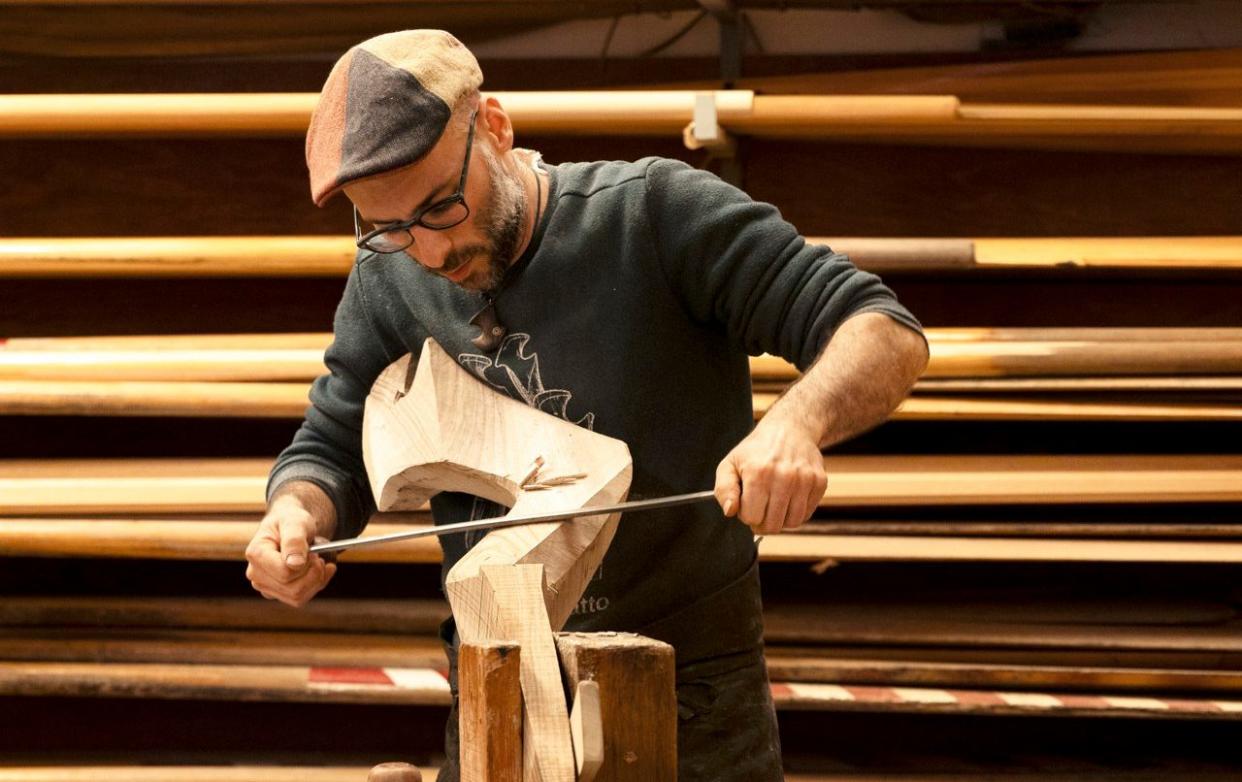
In the northern quarter of Venice’s Cannaregio, where laundry sways overhead, the narrow streets are lined with gold. Literally: there’s a glow from a set of windows on this particular calle, and flecks of gold pepper the air and flutter across the floor within, 18ct fairy dust. These are the workrooms of Mario Berta, a battiloro – literally a gold beater, and the last one still to operate in Venice.
The family has run the business from this workshop, once the home of Tiziano Vecelli (better known as the painter Titian), since 1926. Their tissue-thin gold decorates the lamps in Saint Mark’s Basilica, and gleams on the angel that overlooks it from the bell tower. It also gilds the decorations of the city’s hotels and jewellers.
‘We still work with the machinery, desks and chairs that were the originals,’ says Eleonora, daughter of Marino Menegazzo and his wife, Sabrina Berta, who manage this family enterprise, founded by Berta’s grandfather’s cousin. The two of us are carefully negotiating the raised slats on which everything in the room sits; at the end of the day, all the gold that has fallen through to the floor is swept up and recycled.
‘We don’t let even a drop go to waste,’ says Eleonora. And with good reason: when we meet in April, they are working on one of their most ambitious projects to date, a solid 18ct gold Tod’s Gommino loafer, complete with box, which will take pride of place at an exhibition celebrating Venetian crafts during the Venice Biennale, alongside hat making, glassblowing and engraving.

It’s a particularly poignant project for the Menegazzo family as they are the sole representatives of an industry that in the 18th century boasted 300 competing businesses. What’s more, the Tod’s project may be their swansong. The physical beating is done by the paterfamilias, Marino. He is 70 years old this year and, with no younger apprentices interested in stepping up to the sheer physicality of the job, they plan to close the business soon. Which is a tragedy, because what they create is truly mesmerising.
‘Everything starts with the weather; if you have a bad day weather-wise, you may as well not start,’ says Eleonora, referring to the humidity that governs the crafting process. Too humid and the gold will soften and become too sticky to work with; too cold and it will harden. The first stages involve making the ‘fusion’ – ingots from nearby Vicenza are heated to melting point. Once cooled in moulds, the precious metal passes through the ‘pasta machine’ – a creaking, lethal-looking device that flattens the gold from a 6cm chunk to a thin sheet that’s 7m long. From there, the strip is cut with scalpels into 2cm squares and stacked in a little packet with 330 leaves – the most fantastical Post-its you ever did see.
Then the fun begins. Marino takes the shimmering stack across the charming wisteria-draped courtyard to a tiny workroom, where he’ll beat it by hand with a hammer on a stone slab to get it to the desired width. Mosaic gold is the thinnest kind and requires two hours of continuous beating – the methodical thrum of the hammer blows is almost meditative. Thicker widths can take 50 minutes, but once he starts Marino can’t stop – the gold will contract as it cools.
‘It’s not about strength, but technique,’ says Marino’s daughter as he strikes again and again, using hammers from 3kg to 8kg in weight, a luxury Thor. Marino gauges how much more work there is to do by counting each beat, rather than by the time he’s taken. In four decades, he says proudly, he’s broken only four fingers.
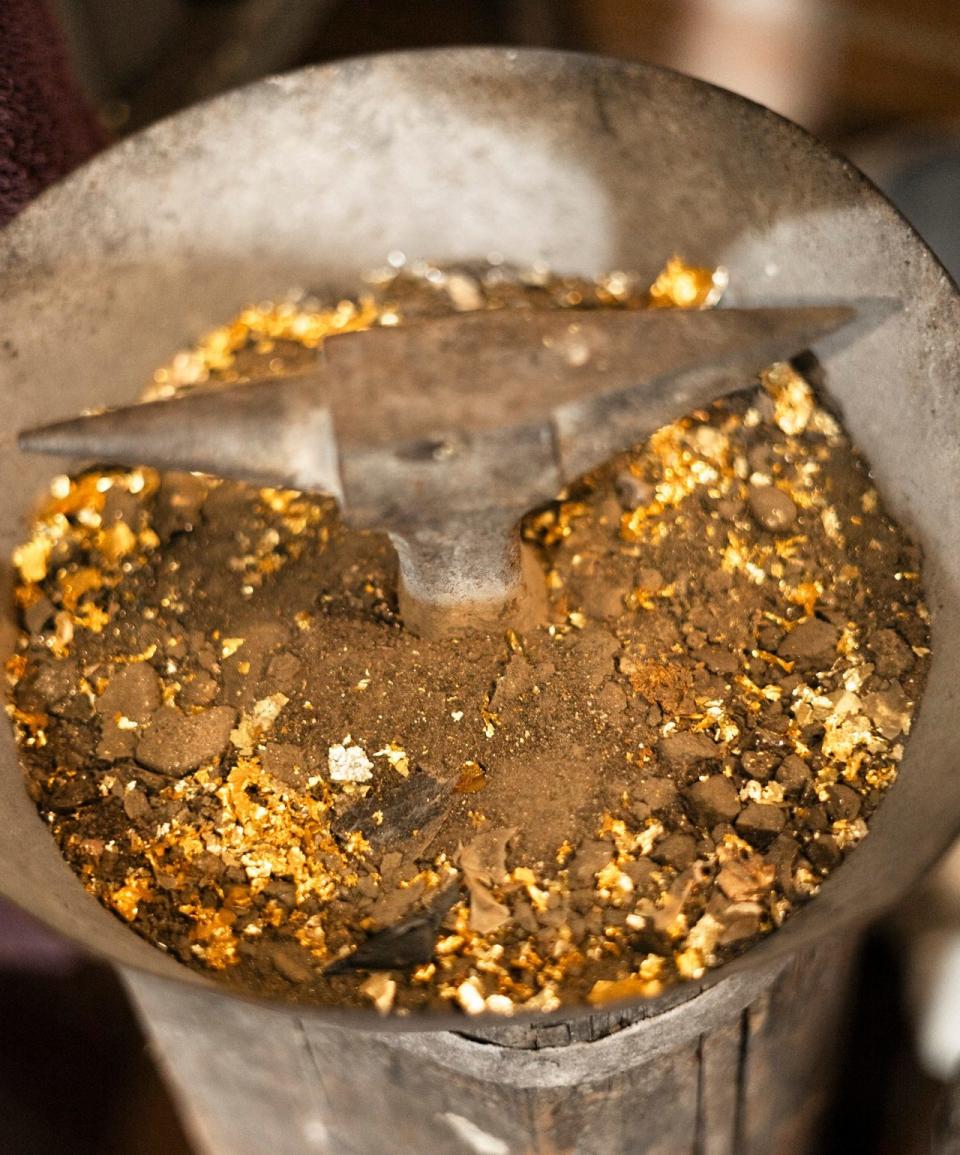
From here, it’s back to the workrooms, where the flattened gold will be sliced into exact squares; gold-cutting team Sabrina and Eleonora work nimbly and, crucially, blow on each cut square. The breath smooths the surface, otherwise it would crinkle. The light in here is muted to soften the glare of the gold leaf.
A few canals away, meanwhile, in a warren of streets blighted by tourist shops, a quieter choreography between man and material is in progress. In a workshop where glossy wooden oars spiral to the ceiling, Saverio Pastor’s athletic frame undulates alongside the flowing wooden structure in front of him, as he deftly chisels the wood. He’s crafting a forcola, the heraldic rowlock on which a gondolier rests his oars, and an icon of La Serenissima, along with the Lion of Saint Mark and the ever-present pigeon.
‘It’s a process that’s technical, functional but also artistic, and that matches my character very well,’ says Pastor quietly. ‘I’m happy every morning. Working with wood is good for my soul.’
He founded his workshop 12 years ago, after studying under master craftsman and ‘forcola king’ Giuseppe Carli to create oars and forcole for the gondolas and rowing boats of Venice, a natural progression from his previous career. ‘I was an astronomer,’ he says. ‘And in astronomy we have a saying, “From the stars to the sty.” I found out that this building used to be a stable for horses, and it felt natural to move here.’
A native Venetian, he spent his childhood rowing on the city’s opaline lagoon. ‘There was a time when the city of Venice didn’t consider its importance,’ he says, referring to the monstrous cruise ships that towered over the city and upset the ecosystem of its canals. They’ve now been barred. ‘It’s a delicate balance, and we must remember nature’s importance.’
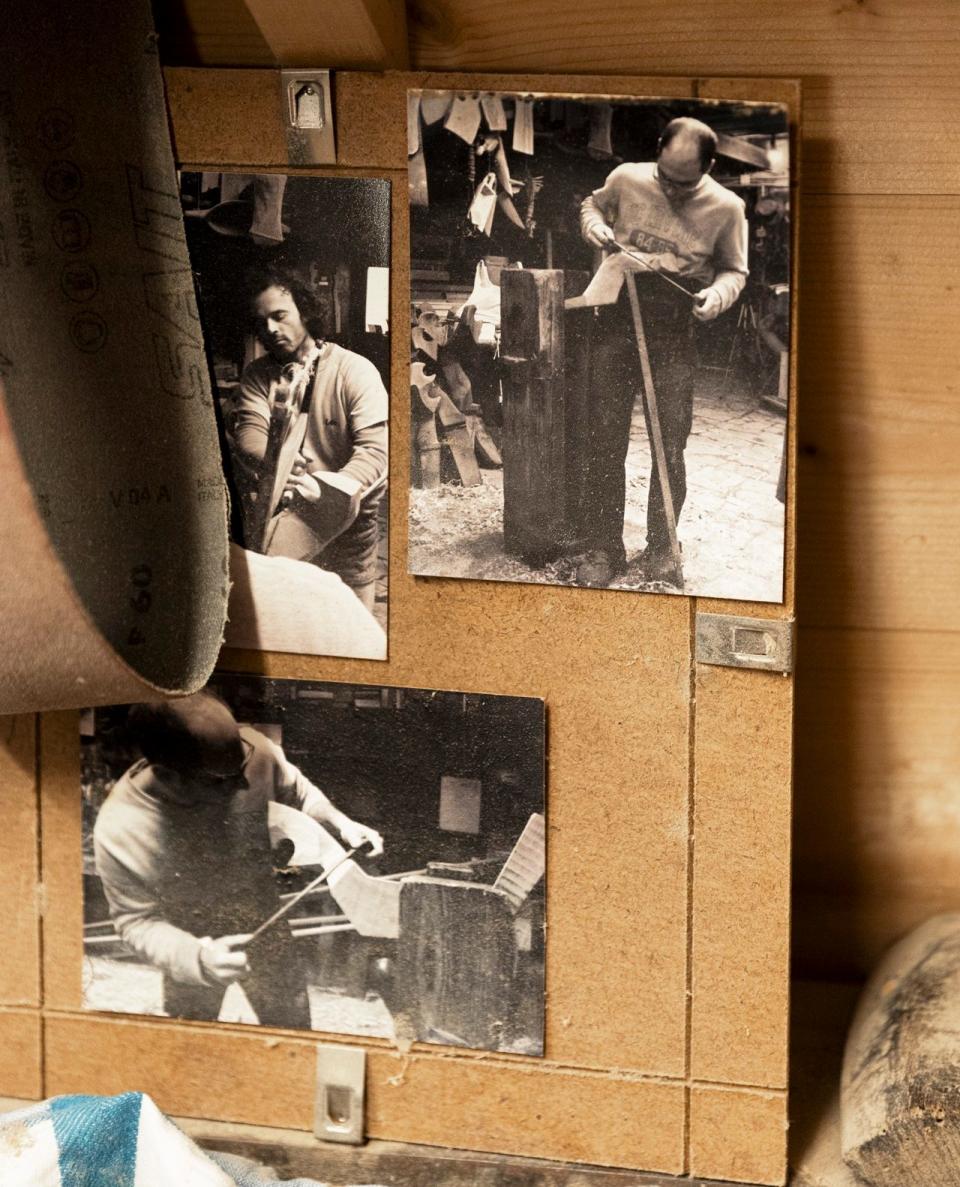
For the Tod’s exhibition at the Biennale, Pastor is creating an exaggerated version of his forcola, in which the structure evolves into a pair of hands clasping a mighty oar – particularly resonant in the shipyard in which the exhibition takes place. But day to day, he crafts forcole from huge pieces of timber shipped from the Balkans. He starts with a quarter of a walnut tree, selecting fresh trunks and waiting at least two years for them to dry. After that, a ‘rough cut’ whittles down the proportions, then the timber must be seasoned for another year.
When the wood is finally ready, Pastor will sculpt it into the fluid shape of the forcola. The process will take around 40 hours, from start to finish, and he works with saws and tools in decreasing sizes as it nears completion. He will then fit the hulk of timber into a vice, and work around it to sculpt, shave and finesse each part, rocking a large chisel with two handles back and forth like a pastry chef kneading dough.
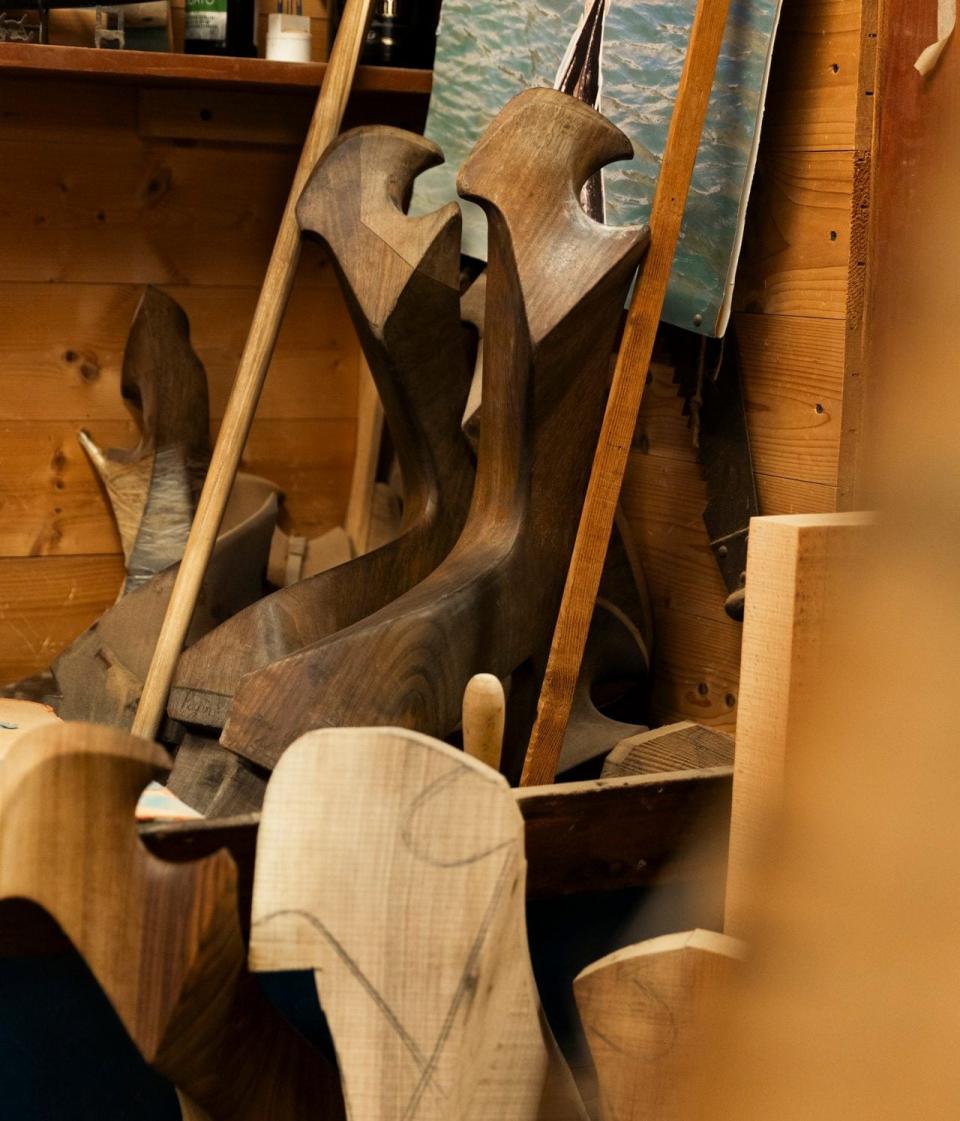
Once the form of the forcola has taken shape, he polishes it with sandpaper, and after it’s rested for several hours, he’ll oil it. Now comes the Cinderella moment – the transformation scene in which the forcola is fitted to a gondola. These are hard-wearing practical objects that bear the weight of the oars day after day, so they need to be set just right. Pastor can spot the particular curvature and hallmarks of his designs as they bob past him on the Grand Canal: ‘You’re creating something that is part of the language and history of the city for ever,’ he says.
‘Craftsmanship has always been at the centre of what we do, so we wanted to explore what the craft of Venice can offer and apply it to Tod’s,’ says the family company’s CEO, Diego Della Valle, who has spearheaded other heritage initiatives across Italy, including the restoration of Rome’s Colosseum (he enlisted Andrea Bocelli to perform there when it reopened). Tod’s shoes are crafted by hand in the Marche region of Italy, but artisanal excellence is, he says, ‘part of our culture; quality in everything we do, from food to design and art’.
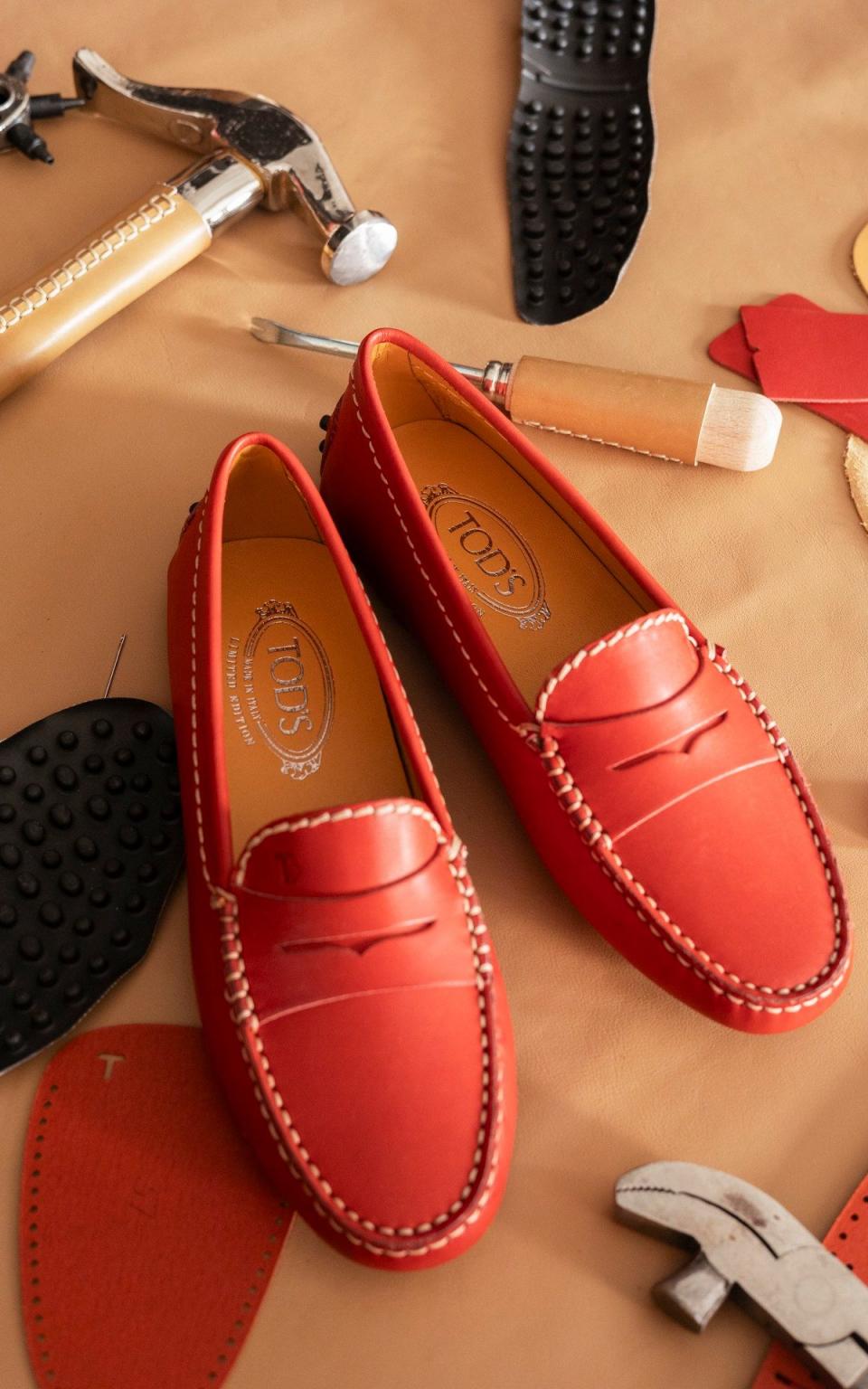
These exhibition pieces are a chance to showcase Italian craft to a new audience. ‘It’s essential to support projects that the young generation can discover,’ says Della Valle (Tod’s runs a school where older members of its factory can pass on their knowledge to the new recruits). To mark this exhibition, the brand has also launched a new Gommino loafer and bag in colours that evoke Venice: the blue of the lagoon and, of course, that rich Titian red.

